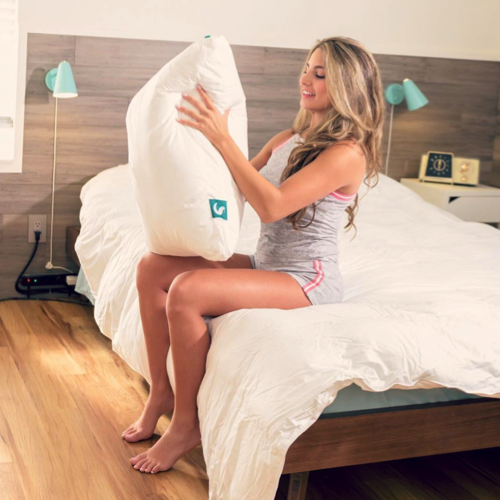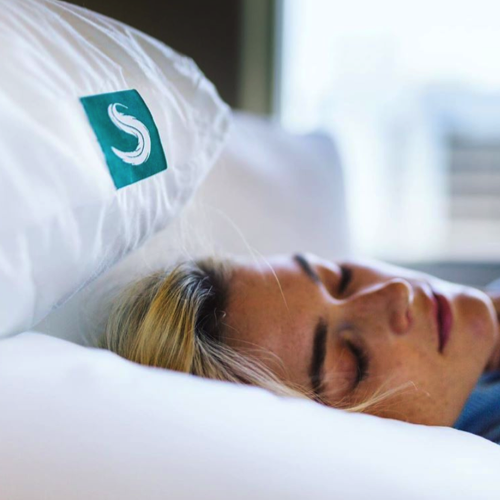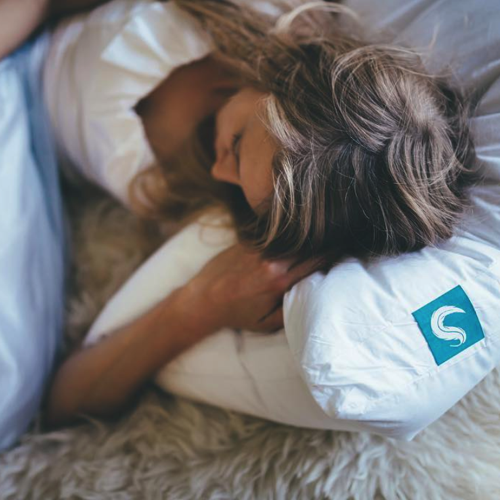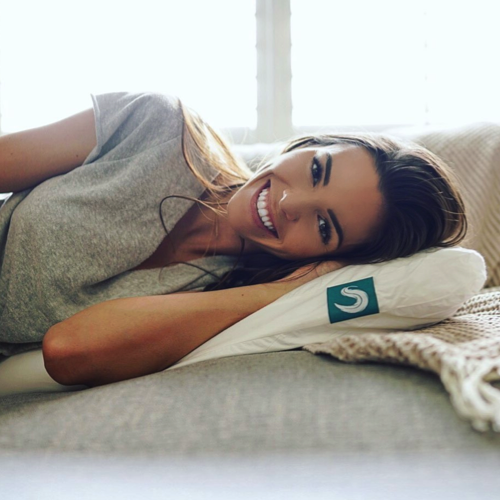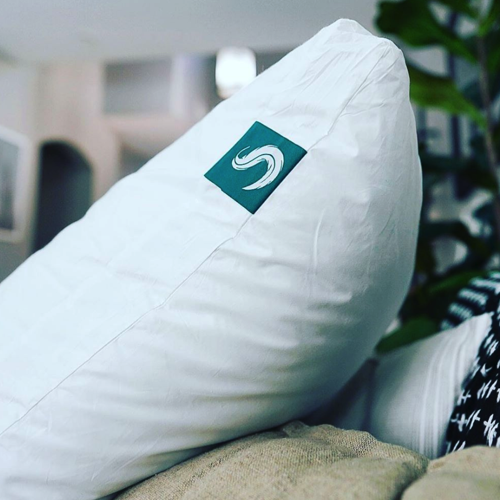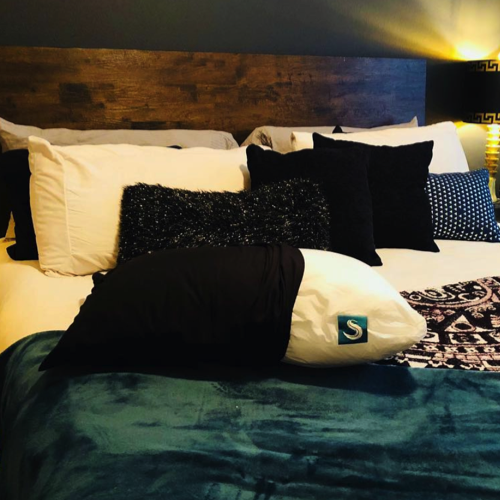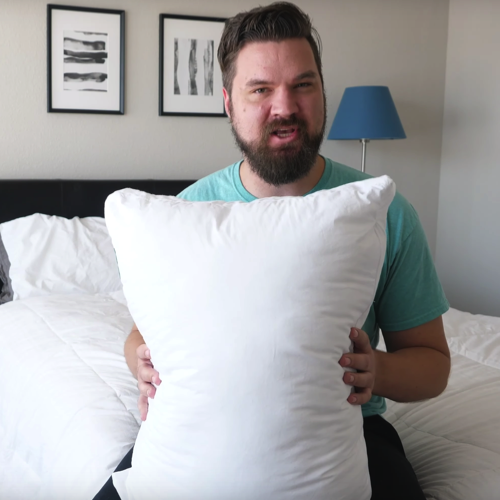HEALTHY SLEEP STARTS HERE. DISCOVER THE LATEST IN MODERN COMFORT TRENDS AND LIFESTYLES.
We’re here to help you get a better night’s sleep. It's as simple as that!

Note: Our premier sleep partner, Sleepgram, has been the most ordered sleep item in recent weeks!
Ready to learn more about getting a good night’s sleep? Our mission revolves around helping people understand about tips and products that aid in sleeping more soundly – from choosing the right pillow to tips to practice before bed.
We're here to help you learn how to get your best night's sleep.
Because let's face it, great sleep changes everything. We want everyone to share our vision that sleep is a vital component of health and wellbeing and that everyone living with sleep issues should have access to effective, consistent, evidence-based support.
Listed below you will find tid bits about sleep products and things you can do to have a great night of sleep. Not all are proven to work for everyone so we just want to be clear on that. Hope you enjoy the info and please reach out to us with any questions. We love feedback!
5 Questions To Ask Yourself Before Buying A Pillow.
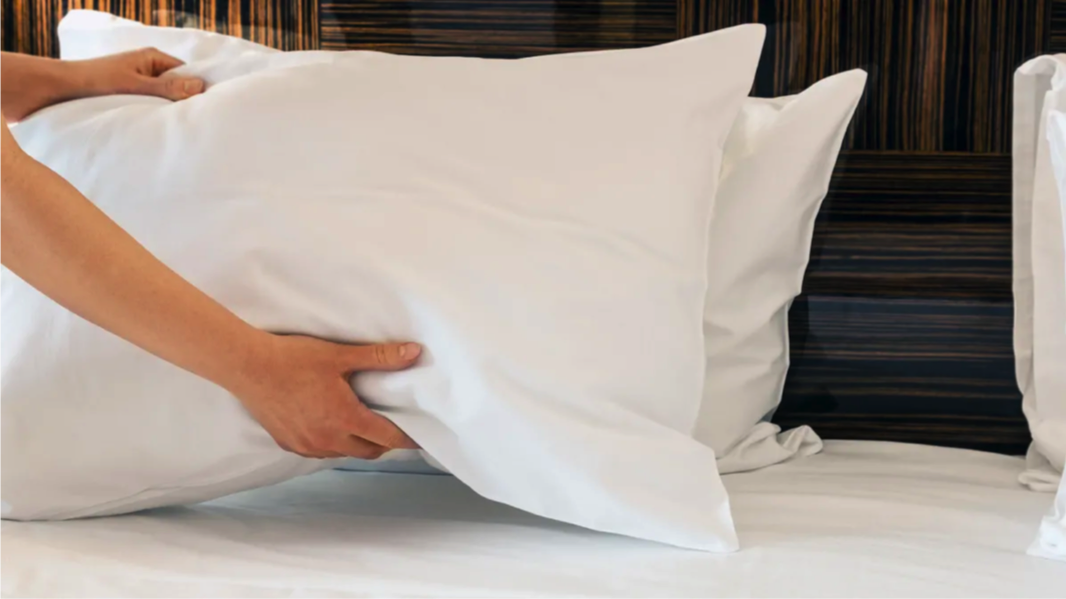
Before you start to hunt for a new pillow, take a personal inventory. Spend some time thinking about your body, lifestyle, and sleep style. Here are five questions you need to ask yourself as you hone in on your ideal pillow.
1) Do You Move Around When You Sleep?
Consider a pillow with fast spring-back when pressed gently, to ensure you get continued support as you move around. You may even want to have two pillows on your bed, to keep you comfortable as you change position in the middle of the night.
2) Are You A Snorer?
There are lots of reasons you might be snoring, but it's possible the main culprit is a bad pillow. Contoured pillows or wedge-shaped pillows can help reduce snoring, and give your throat a much needed rest.
3) Do You Have Allergies?
If you have allergies, look for hypoallergenic pillows. Also consider special covers or cases that further minimize allergens.
4) How Do You Sleep?
The position you fall asleep in, and the position you stay asleep in, have a big impact on the style of pillow you should buy. Stomach sleepers, for example, can benefit from a slimmer pillow, or no pillow at all. Side sleepers need a pillow that has the right combination of height and firmness to prevent aches in the morning. Back sleepers may benefit from using a pillow that has extra loft in the bottom third, to keep the neck in proper alignment.
5) Have You Always Hated Your Pillow?
Changes in your lifestyle can impact your comfort in bed. If you have gained weight recently, you may find you require a different type of pillow, or need to sleep in a different position. Try to think about pillows you have loved in the past. If you've never found one that was just right, consider trying an entirely new style.
Screen Time Before Bed Impacts Your Overall Sleep

A study was conducted and the researchers found out that a double expresso coffee does not negatively affect your sleep as bad as your cell phone does. The blue light is so strong that when our brain receives the light it comes off as a sun glare, which results in our sleep time being pushed back as well as our melatonin not being released from our brain. The light reflected from your phone is basically telling your brain not to sleep. The stimulus impact allows our thinking part of the brain to keep working and has a hard time shutting down to fall asleep. Try to avoid less screen time like TV's, tablets and put your phone away about an hour before you go to bed and watch your sleep increase dramatically.
What’s The Right Pillow For You? Here’s How To Choose

When was the last time you thought about your bed pillows? If your answer is “it’s been a long time,” or “not at all,” you’re not alone. Most people who, when they think about their sleep items, focus primarily on their mattresses. Mattresses get a lot of attention, for a good reason. Your mattress is the largest, most important financial investment you’ll make in your sleep. But when it comes to sleep quality, pillows are almost as important as your mattress. If you’re sleeping on a worn-out pillow, scrunching and folding it up every night to get comfortable, that’s a red flag that it’s time to update. Even if your pillow isn’t old and deflated, it might not be the best choice for your comfort and support.
A good sleeping posture is key to sleeping soundly, night after night, and to waking without pain and stiffness. Your pillow helps to support a healthy sleep posture. What does that posture look like? A body in alignment, from the knees and hips, through the spine to the chest and shoulders, head and neck.
As a general rule, bed pillows need to be replaced after 18 months. Memory foam pillows typically last longer, up to three years. Natural pillows tend to last longer than synthetic pillows. And higher quality pillows will last longer than inexpensive ones. If you’re using pillow that’s five or six years old, you’re not getting the support you need—and you’re not sleeping as comfortably as you could.
Does sleeping position matter to pillow choice?
The answer is: YES. There are general guidelines that match sleeping position with pillow type, but they are not hard and fast rules. Why? Because nearly all of us switch sleeping positions throughout the night. You might be a side sleeper who also spends some time during the night on your back. Same goes for the stomach sleeper who shifts occasionally to one side. You want a pillow that works for you in all your sleeping positions.
That said, here are some broad guidelines:
Side sleepers may need a firmer pillow and a pillow on the thicker side. Look for one that’s as thick as the distance between your ear and outside shoulder.
Stomach sleepers may need a soft pillow—or no pillow at all—underneath their head. A pillow under your stomach and pelvis may help prevent back pain.
Back sleepers may need a flatter pillow, to keep your head and neck in alignment. Back sleepers may want a softer pillow—but if you have neck pain and sleep on your back, look for a pillow that provides additional support, while maintaining the softness that’s comfortable for you.
Lucky for you we have teamed up with our premier sleep partener, Sleepgram, who offers a fully 3-in-1 adjustable pillow that suits all sleeping positions. With their multiple comfort level settings, sleepers can enjoy a full night of rest to the firmness level of their choice! How about that for pillow technology!
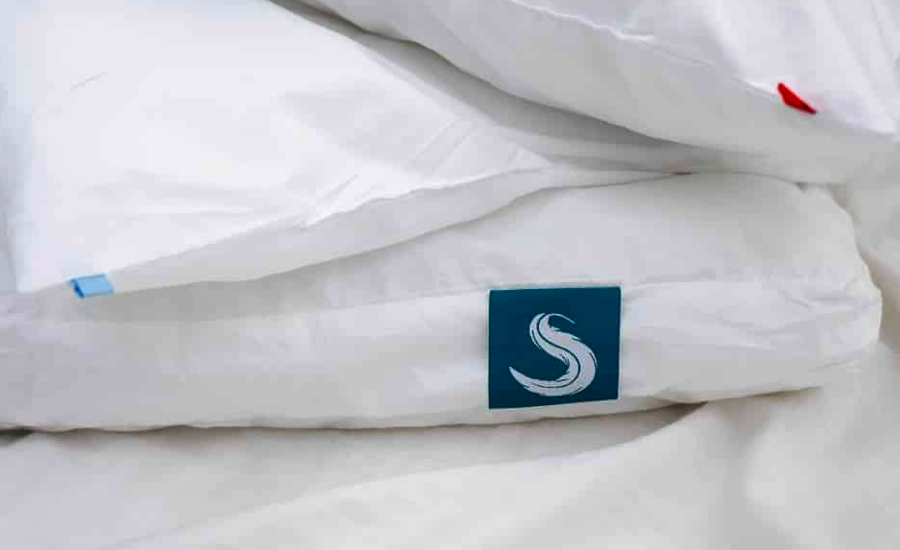
With thousands of verified 5-star reviews, it has become a very popular pillow
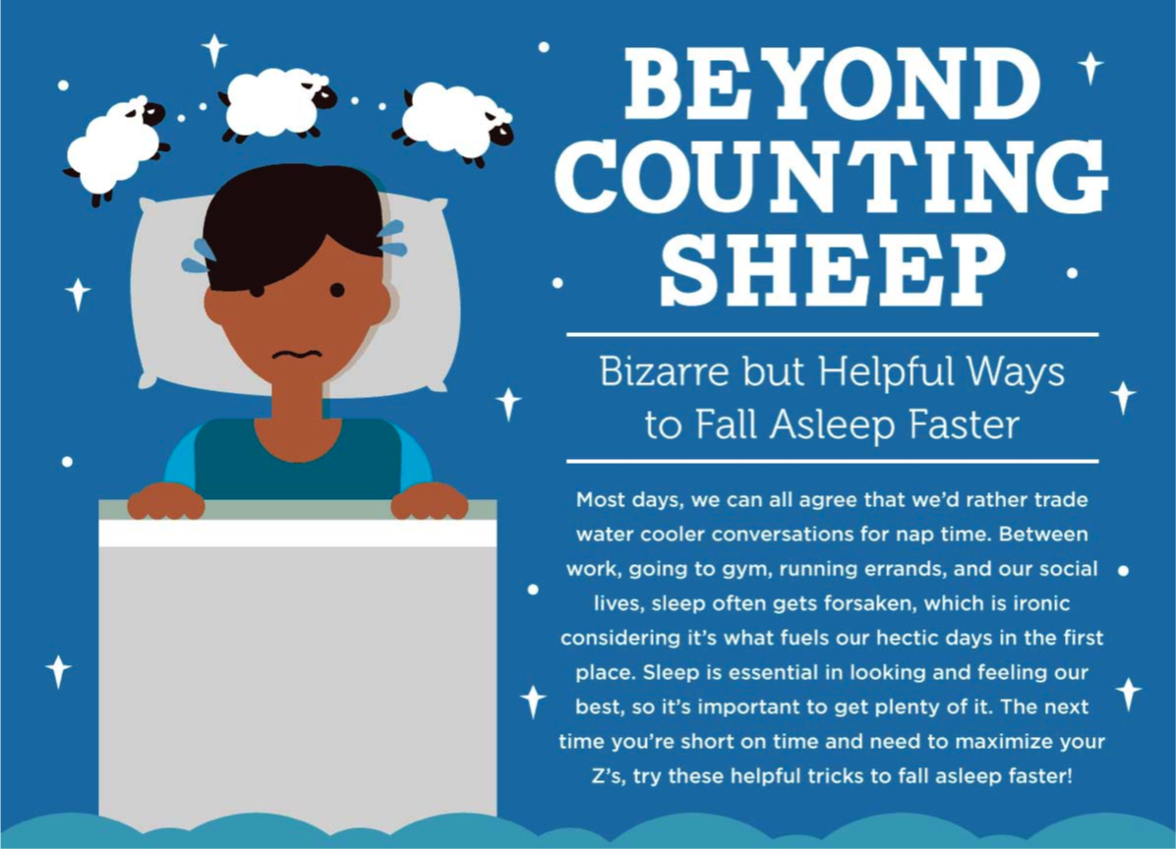
3 Ways to Fall Asleep Fast — Without the Sheep or Fairy Dust
Nothing feels more defeating than peering at your clock in the dark and realizing you haven’t had a wink — and you need to be up in a few hours. As if the worrisome thoughts keeping you awake weren’t bad enough, now there’s the added stress of being sleep-deprived.
Recent studies on both humans and mice have found that being gently rocked like an infant can help with sleep. But most of us can’t shell out a couple grand for an adult crib.
The good news? There’s a bounty of research-backed methods you can try when counting sheep just isn’t cutting it. Let’s get to it so you can snooze, stat.
Snooze in under 2 minutes with the military method
The military is known for pushing people to their mental and physical limits, and this technique is no different, albeit in a soothing way.
How to do it
1) Fully relax all your facial muscles, including your jaw, cheeks, eyes, and forehead.
2) Lower your shoulders as far as you can.
3) Relax the muscles in your arms, from the top down to your fingertips.
4) Breathe out, feeling all the other muscles in your body relax, starting with your chest and then down to your legs.
5) Spend 10 seconds envisioning a relaxing scene to clear your mind.
If that doesn’t work, repeat “Don’t think, don’t think, don’t think” to yourself for another 10 seconds. Quick march to the bedroom!
Forget about your worries by jetting off to Paris (kinda)
Your mind loves replaying those anxiety-inducing moments from earlier that day just as you’re trying to doze off. With the “imagery distraction” technique, you can show your brain who’s boss by making your mind a positive-vibes-only mini cinema.
How to do it
1) Think of a scene or memory that makes you truly happy and calm. Maybe you’re on vacation, exploring Paris.
2) Then start to really focus in on it.
3) Consider the smells around you — freshly baked bread from the boulangerie — and the sound of car horns as they navigate the Arc de Triomphe. Picture touching the metal at the base of the Eiffel Tower. It feels cool and weathered.
4) Imagine what the view looks like from the top. Can you remember what it feels like in your body to be there?
Most of us aren’t used to concentrating in such detail, so if this feels harder than you expected, don’t worry. With enough nights of practice, it will become easier to guide your mind to a place of calm.
Not tired? Relax your body and your mind will follow
It’s midnight, and you’re sitting on the sofa, flicking through Netflix. You should go to bed to be ready for work in the morning, but you’re just. not. tired. Do you a) press play and hope for the best or b) go to bed and lay awake in the dark? Neither! The answer is c) try progressive muscle relaxation (PMR), a relaxation technique based on tensing specific muscle groups throughout your body.
How to do it
1) Contract the muscles in your feet. Try curling your toes and the soles of your feet.
2) Inhale deeply and hold both your tensed muscles and breath for between 5 and 10 seconds.
3) Exhale all at once while quickly releasing the muscles. Imagine the tension flowing out.
4) Rest for about 20 seconds before moving on to your calves, and so on with each area of muscles up your body.
This isn’t necessarily the quickest option, since it will take up to a half-hour once you’ve worked on a variety of muscles. But research shows it can be especially helpful when you’re all wound up with anxiety and can improve overall sleep quality.
Here are some customers talking about their experience with our pillow partner in sleep industry, Sleepgram!
